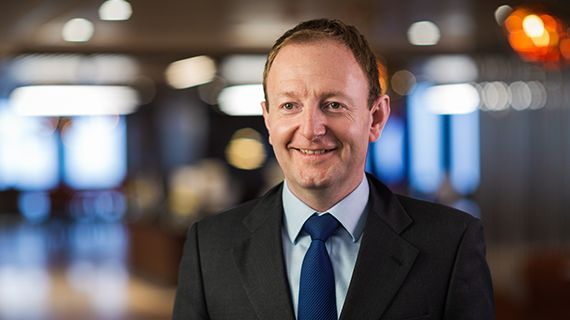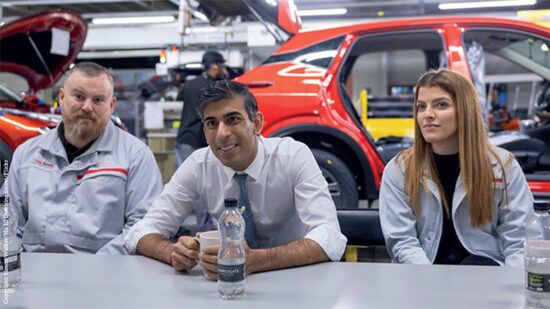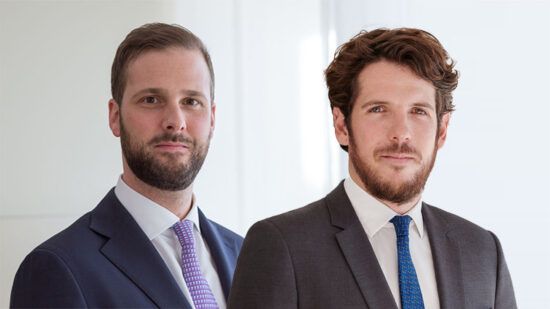Aviva Investors’ Mark Versey describes the firm as one of the leaders in embedding ESG and diversity practices into the firm, even pre-dating his appointment to CEO.
Providing evidence of engagement, appointing ESG specialists as co-managers on funds, and its term-time contracts and reverse mentorship programme sets it apart from other asset managers, he said.
Here, Versey answers ESG Clarity’s questions on the path to net zero, collaboration, greenwashing and diversity.
What sets Aviva Investors apart in its approach to sustainability?
Our pedigree is unrivalled in ESG. I have been here for eight and half years and it was a huge focus when I arrived. A lot of that is due to the amazing talent we have such as Steve Waygood (chief responsible investment officer) and Mirza Baig (global head of ESG investments).
When we have clients do due diligence on us, they say we have been pioneers for 15 years, we have unrivalled voting and engagement records showing the wins we have had.
We haven’t simply jumped on the bandwagon; we can show real evidence of embedding ESG in investment processes and trying to carry out policy change with what we call ‘macro stewardship’. This can be through lobbying or being a founding signatory of the Principles of Responsible Investment (PRI).
How do you work with collaborative organisations such as the PRI?
We do a lot unilaterally, but the power is in creating coalitions as the voice is amplified. The Glasgow Financial Alliance for Net Zero (GFANZ) is a good one – as it issued a call to action to governments in run-up to COP.
But what is next for GFANZ is turning that into action. The Net Zero Asset Managers’ initiative has been signed up to by managers with $57trn in assets, but the asset managers are just the agents – it’s not our money. We need to get the asset owners signing up too – the Net Zero Asset Owners alliance is around $10trn, we need those numbers to be the same.
Everyone has pledged to meet science-based targets – let’s see that reporting happen and who is actually doing it. Aviva has released its first transition plan and more of these will come out over next two years. Until we can actually see good transition plans from across the industry it’s hard to know whether they are going to deliver. Once they are published, investors can track and identify the leaders and laggards.
Earlier this year, you wrote to investee companies urging them to turn climate pledges into action. What was the response and when will start to see action?
We are already seeing that come through – one of our most interesting engagement policies is targeting the 30 largest carbon emitters. They tend to be oil and gas, utilities or miners and we have an engagement strategy in place for each one. They contribute so much to global carbon emissions – we have given them three years or we will divest.
We have seen good moves in the right direction from many of them. Our strategy is to buy brown and make it green; ESG hasn’t caused us to not be invested as we are trying to effect change.
This is aligned with customer outcomes as companies that don’t get on board will be long-term underperformers.
Do you have concerns about investors being misled by greenwashers in the industry?
The activity is still widely misunderstood. The institutional market has gone through huge changes in the past few years and is very knowledgeable about these issues and accepting of investing in the transition.
But from a consumer perspective, it’s very much about how you ask the question. If you ask a pension saver “do you know your pension is invested in world’s worst carbon emitters?” they will be horrified and then want to exclude. But if you ask “do you know your pension is invested in companies turning from brown to green and building a sustainable future?” then they are genuinely impressed with that.
However, the phrase “investing in the transition” is not a consumer phrase that will ever work – that’s where Financial Conduct Authority (FCA) needs to come along and look at how to explain this.
The greenwashing risk here is large – investors can hide behind investing in transition to invest in anything.
The answer is to get a sustainable fund label and the bar must be set high enough so the objective of the fund is very clearly stated and is also monitored and measured so you can show consumers over time the impact that is being had.
That’s what we will be lobbying the FCA for – the sustainability label needs to align to the purpose of the fund, it can’t be a case of just changing an existing fund.
How do you ensure ESG is embedded into the funds’ selection process?
Six months ago on our outcome range, we assigned a co-fund manager who is an ESG specialist and gave them full veto rights on any stock decision. That is pretty unique in the market and brings such a credibility.
The ESG experts are not responsible for the performance of the fund, but they are that embedded into the role that they can control the stocks that go in and can divest too.
What are the diversity initiatives you run at the company?
We recently welcomed our fourth year of women returners – these programmes are becoming much bigger in the asset management industry, and I am pleased to say we had a 90% retention in 2021 with women we brought on.
It is such a great programme. A woman joined us who had been out for 10 years bringing up a family but with her career history it was just two weeks before she was making an impact in her team. I am so impressed with their courage to do that.
They are so infused, they spot things we do that is naïve and old fashioned, they are looking at things from the outside with a fresh eye.
As a result, we have also created term-time contracts. For some roles it’s hard to do but we have been able to do it in on one pretty hard role and it works. The flexible working that Covid brought us is here to stay.
That’s fantastic. How are you ensuring a diverse mix within the senior leadership team?
One of the big problems for the industry is to try and promote women and ethnic minorities into senior roles. There is a lack of role models everywhere in asset management, and we have to balance that with equally not wanting to be discriminatory against men.
We make sure we have diverse candidate lists for each role to level the playing field.
The most interesting thing we are doing is rethinking our approach. Do we need to hire someone who has been doing this for 10 years as it can be automatic to promote them into that role?
Instead, we have been creating two roles, which can both operate at a slightly lower level in terms of experience and come at it from a skills-based perspective. This gives us the ability to hire by skill rather than track record and if you have a diverse list of candidates that will come through.
We also run a reverse mentorship – I have a mentor who is a black woman in the business. We meet regularly and discuss what is going on in the company. It’s as much for me to learn as it is for her, it’s a two-way thing; for me to be the listener and to find out what is going on in the business and for her to provide the insight. It has helped me change some of my thinking and helped me understand a completely different viewpoint in the company.








